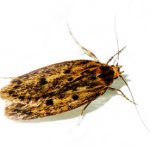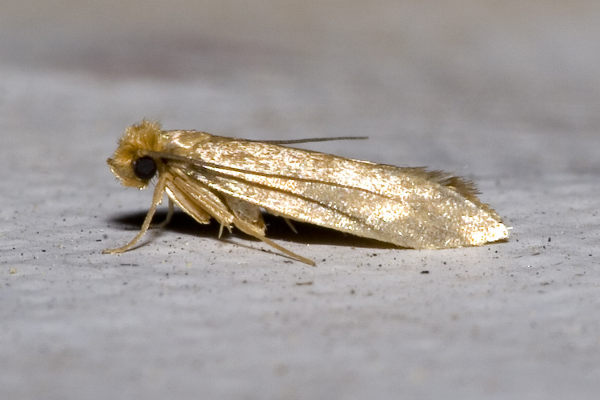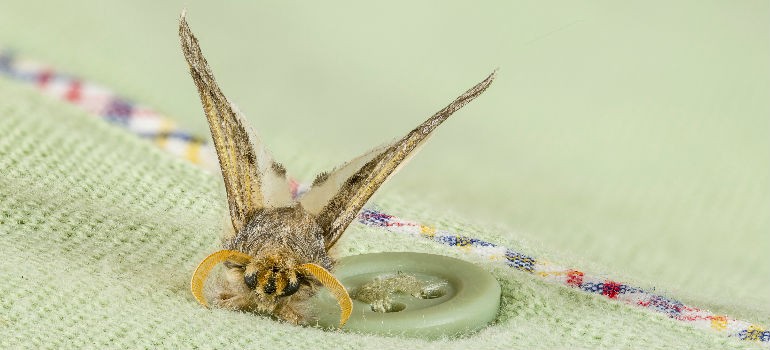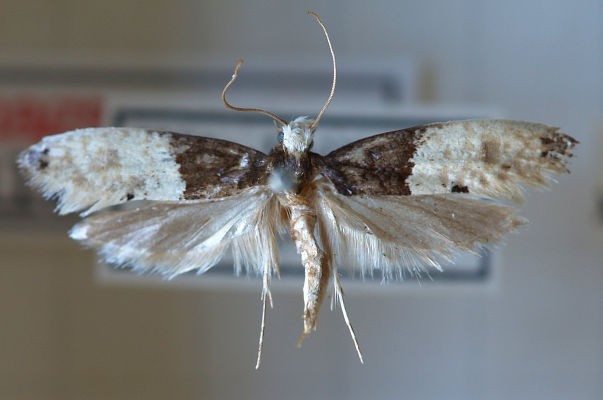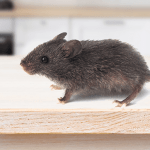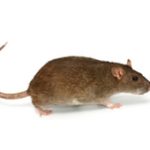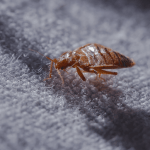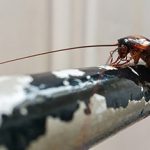Types of Moths in the UK
Over 2,500 species of moths live in the UK, from common household invaders to rare garden visitors. Understanding the different types of moths in the UK is key to preventing infestations that damage clothes, food, and furnishings. You will learn how to recognise and deal with the most common moth species in the UK. In addition, you will learn what you should do if moths infest your home.
Indoor moths in UK areas are rarely larger than 20 mm, although there are outdoor species that can reach up to 120 mm. Unlike butterflies, moths rest with their wings flat. They also appear to be “furrier” and “fatter” than butterflies. UK moths include these species:
Brown House Moth (Hofmannophila pseudospretella)
The Brown House Moth is bronze-brown wings with dark flecks feeds on wool, cotton and other types of clothes. It reaches up to 26 mm and has a slender, yellowish body. It is a common invader inside UK houses, except for the northernmost regions of Scotland. You can spot Brown house moths in kitchens, pantries and carpets.
Image by: David Short
Common Clothes Moth (Tineola bisselliella)
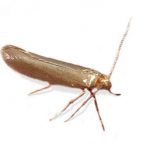
The Common Clothes Moth is small, beige with fringed wings. It has a smaller body 6 mm-8 mm and the edges of the upper pairs have a “rugged” appearance. Their larvae feed on fabrics and leave irregularly shaped holes. You can found it in homes, wardrobes, carpets. Common clothes moths can damage wool, silk, and other natural fabrics.
Image by: David Short
Case-bearing Clothes Moth (Tinea pellionella)
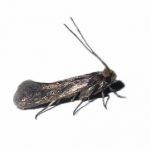
Case-bearing Clothes Moth is 6mm-8mm long and slightly darker than common clothes moths with black spots on wings. It is much rarer than the Brown house moth and the Common clothes moth but it is still possible to spot one in your wardrobe and dark storage areas. Case-bearing Clothes Moth can damage fur, feathers and clothing.
Image by: David Short
Common Grey Peppered Moth (Biston betularia)
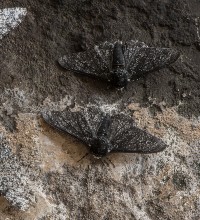
The Peppered Moth (Biston betularia) is the most recognised grey moth in the UK. It has evolved through natural selection, with dark and light morphs adapting to changing urban environments. While it poses no threat to homes, it is frequently seen in gardens and wooded areas, making it a symbol of environmental adaptation.
Oak Processionary Moth (Thaumetopoea processionea)
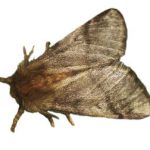
The Oak Processionary is an invasive species. While the adult poses no threat to humans, their caterpillars have venomous hair-like appendages which remain toxic for years after the fall of the body. The venom causes severe irritation, redness, swelling.
Image by: Gyorgy Csoka
Garden Tiger Moth (Arctia caja)
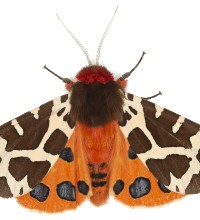
The Garden Tiger Moth, scientifically known as Arctia caja, is one of the most striking and easily recognisable moths in the UK. With its bold colouration and impressive wingspan, it’s a favourite among naturalists and a valuable indicator of environmental health. The Garden Tiger Moth is a visually striking species with a wingspan ranging from 45 to 65 millimetres. Its forewings are a rich brown colour, marked with distinctive white patches, while the hindwings are a vivid orange-red adorned with dramatic black-blue spots. The moth’s body is hairy and robust, featuring a vibrant reddish-orange abdomen that adds to its bold appearance. Its larva, commonly known as the Woolly Bear caterpillar, is covered in dense hairs with a mix of brown-orange and black colouring. The bright colouring of the adult moth’s hindwings serves as a warning signal to predators, indicating that it may be unpalatable or toxic.
UK Moths Behaviour
All moths are prey to other predators. Lizards, birds, spiders and even plants feed on different species of those flying insects. Some moths have developed defence mechanisms against such threats. Many caterpillars use deception—they have fake “eyes” painted on their thorax to appear menacing. Others are downright toxic and have venomous hair-like segments, protruding from their thorax. Some emit an unpleasant scent and some even hiss.
Many caterpillars are social and live in colonies. However, moths are not gregarious.
Although nocturnal moths are active during the night, they are still attracted by light and are known to fly around light sources such as lamps, torches and even TV screens. Clothes moths, however, are not nocturnal and actually stray from the light. They prefer dry, dark locations, such as attics and closets. They hide in the corners making them hard to spot until the population has already infested your property.
Read more: How long do butterflies and moths live?
What do UK moth species eat
It is impossible to generalise the diet and behaviour of all moth species. Some species feed on pollen and fruit juices while others are predators and prey on smaller insects. The majority of moths are considered agricultural pests. The main food for moths in your home include clothing, furniture and carpets made of wool, cotton, fur, cashmere, silk, linen, alpaca, hemp, flax.
Information about moth larvae
Moth larvae are called caterpillars. They look like hairy worms and are sometimes mistaken for centipedes or millipedes. They have segmented bodies that consist of a head, thorax and abdomen. The majority of caterpillars are brightly coloured although they blend with their surroundings very well.
Actually, it’s not the adult moth that eats your clothes, but its larvae. They eat anything organically based – cotton, fur, hair, wool, cashmere, even your carpets. And if they don’t have access to that, they would eat through non-organic materials to get to the organic ones. In other words, plastic bags would not protect your clothes from the moths’ larvae.
Pro tip: larvae and moths are attracted by moisture and sodium found in salt and sweat. What has both those things? Dirty clothes. So never put dirty clothes back in the closet unless you want to attract moths.
Are There Any Poisonous Moths in the UK?
There are no poisonous moth species in the UK that are harmful to humans. Unlike some tropical species, British moths do not possess toxins or stinging hairs. However, some people may experience mild allergic reactions to moth scales or droppings, especially in severe infestations.
What to do in case of a moth infestation
If you discover a moth infestation, first identify whether they’re clothes or pantry moths. For clothes moths, wash or dry-clean affected items, vacuum storage areas thoroughly, and use pheromone traps and natural repellents like cedar or lavender. For pantry moths, discard infested food, clean shelves with vinegar, and store food in airtight containers. In both cases, use traps to catch adults and prevent re-infestation, and stay consistent with cleaning and monitoring to fully eliminate the problem.
There are various different moth insecticides on the market. However different insecticides are to be used on different moth species. Your best bet is to contact specialists for a effective moth treatment.
Final Thoughts
Whether you’re dealing with a moth infestation in the UK, recognising the various types of moths is essential. Regular inspections, maintaining hygiene, and using effective moth control products in the UK can significantly reduce the risk of damage to your home.
We only aim to provide some helpful facts about moths species. We don’t provide any medical advice.



